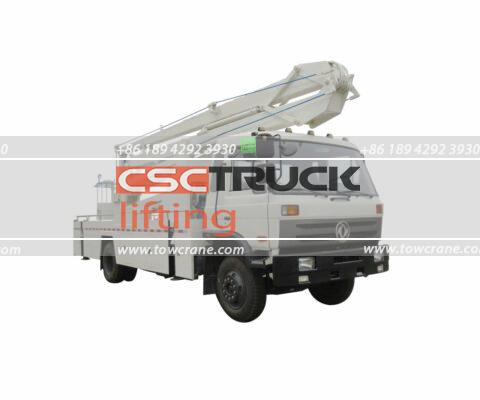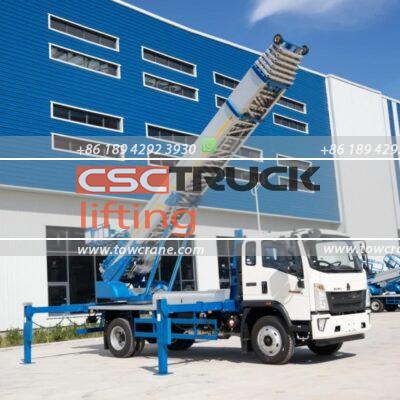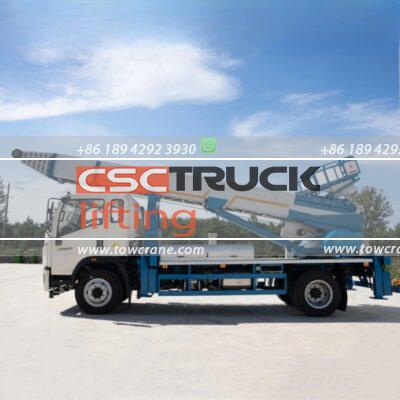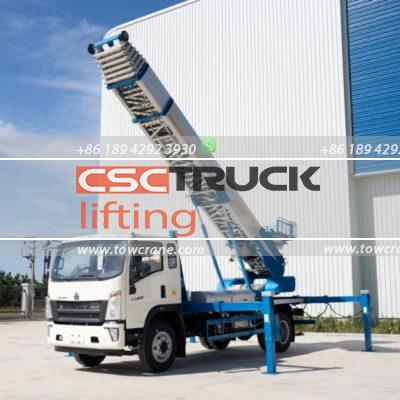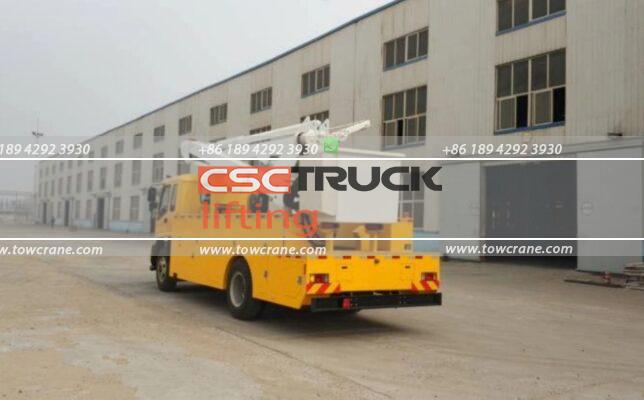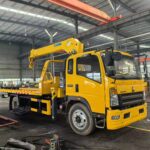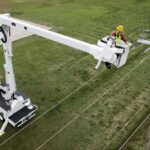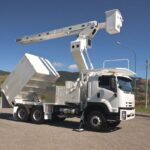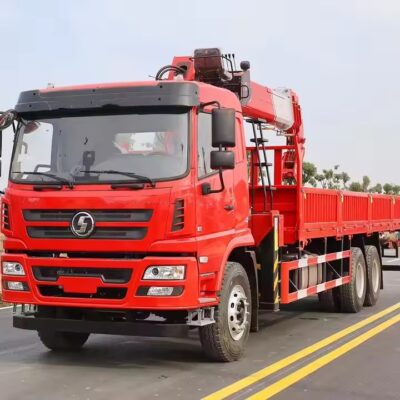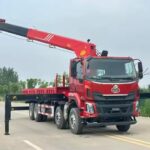Bucket trucks, also known as cherry pickers or aerial work platforms, are specialized vehicles equipped with a hydraulic boom and a bucket for lifting workers to elevated work sites. These versatile machines are indispensable in various industries, including utility services, construction, forestry, and telecommunications. This comprehensive guide explores the types of bucket trucks available, their features, applications, considerations for purchasing, and maintenance tips.
Types of Bucket Trucks
Bucket trucks come in various configurations to suit different tasks and environments. Here are the primary types of bucket trucks available:
1. Telescopic Boom Trucks
Telescopic boom trucks have a straight, extendable boom that reaches significant heights. These trucks are ideal for tasks that require vertical reach, such as working on utility poles and lighting.
- Height Range: Typically 30 to 100 feet.
- Cost: New models range from $75,000 to $200,000, depending on height and features.
2. Articulating Boom Trucks
Articulating boom trucks, also known as knuckle boom trucks, feature a jointed boom that can maneuver around obstacles. This flexibility makes them suitable for working in tight spaces or around structures.
- Height Range: Typically 35 to 75 feet.
- Cost: New models range from $80,000 to $250,000, depending on the boom’s complexity and reach.
3. Overcenter Boom Trucks
Overcenter boom trucks are designed to reach over obstacles and can extend the bucket beyond the center of the truck. They are commonly used in tree trimming and maintenance tasks.
- Height Range: Typically 45 to 85 feet.
- Cost: New models range from $90,000 to $220,000, depending on the reach and additional features.
4. Non-Overcenter Boom Trucks
Non-overcenter boom trucks have a more limited range of motion compared to overcenter models but are still highly effective for many tasks, particularly in utility and signage work.
- Height Range: Typically 30 to 70 feet.
- Cost: New models range from $70,000 to $180,000.
5. Material Handling Bucket Trucks
Material handling bucket trucks are equipped with a jib and winch in addition to the bucket. This allows them to lift and transport materials as well as personnel, making them versatile for construction and utility work.
- Height Range: Typically 40 to 100 feet.
- Cost: New models range from $100,000 to $300,000, depending on capabilities.
Features of Bucket Trucks
Bucket trucks come with various features designed to enhance safety, efficiency, and versatility. Key features to consider include:
1. Hydraulic Systems
Hydraulic systems control the boom’s movement and the bucket’s position. High-quality hydraulic systems ensure smooth and precise operation, crucial for tasks that require careful positioning.
2. Insulated Booms
Insulated booms are essential for electrical work, protecting workers from electrical shocks. These booms are constructed with non-conductive materials to provide a safety barrier.
3. Bucket Capacity
Buckets vary in size and weight capacity, typically ranging from 300 to 800 pounds. The right capacity depends on the number of workers and tools required for the job.
4. Reach and Rotation
The maximum reach and rotation capabilities of the boom determine the truck’s operational range. Full 360-degree rotation and extended reach are beneficial for accessing hard-to-reach areas.
5. Stabilizers and Outriggers
Stabilizers and outriggers provide additional stability to the truck during operation. These features are essential for maintaining safety and preventing tipping, especially on uneven terrain.
6. Control Systems
Modern bucket trucks often come with advanced control systems, including joystick controls, remote operation, and automated leveling. These systems improve precision and ease of use.
Applications of Bucket Trucks
Bucket trucks are used across numerous industries for a variety of tasks. Here are some common applications:
1. Utility Services
Utility companies use bucket trucks for installing and maintaining power lines, streetlights, and transformers. The trucks’ ability to reach high and challenging locations makes them ideal for these tasks.
2. Telecommunications
Telecommunications companies rely on bucket trucks to install and repair phone lines, cable TV lines, and cellular equipment. The trucks facilitate access to elevated infrastructure without the need for scaffolding.
3. Construction
In construction, bucket trucks are used for tasks such as painting, window installation, and roofing. Their flexibility and reach make them valuable for both new construction and maintenance work.
4. Forestry and Tree Care
Arborists and forestry workers use bucket trucks for tree trimming, pruning, and removal. The trucks provide a safe and efficient way to work on trees at various heights.
5. Signage and Lighting
Bucket trucks are essential for installing and maintaining signs and lighting fixtures in public and commercial spaces. Their reach and stability allow for precise placement and adjustments.
Considerations for Purchasing a Bucket Truck
Buying a bucket truck involves several important considerations to ensure you select the right vehicle for your needs:
1. Purpose and Usage
Determine the primary tasks for which the truck will be used. This helps in selecting the appropriate type, reach, and features required.
2. New vs. Used
Decide whether to buy a new or used bucket truck. New trucks offer the latest technology and warranties but come at a higher price. Used trucks are more affordable but may require more maintenance.
3. Budget
Establish a budget that includes not only the purchase price but also additional costs such as insurance, maintenance, and any necessary modifications or upgrades.
4. Dealer Reputation
Purchase from reputable dealers who provide reliable after-sales support, including maintenance and parts. Research customer reviews and seek recommendations.
5. Inspection and Test Drive
Inspect the truck thoroughly before purchase. Check for signs of wear, rust, and hydraulic leaks. Test drive the vehicle to assess its performance and comfort.
6. Compliance with Regulations
Ensure the bucket truck complies with local and federal regulations, including safety standards and emissions requirements. Non-compliant vehicles can lead to fines and operational restrictions.
Maintenance Tips for Bucket Trucks
Regular maintenance is crucial to keep a bucket truck in optimal condition and ensure the safety of its operators. Here are some maintenance tips:
1. Routine Inspections
Conduct routine inspections of the truck’s hydraulic system, boom, bucket, and stabilizers. Look for any signs of wear, leaks, or damage.
2. Lubrication
Regularly lubricate all moving parts, including the boom joints and hydraulic components, to prevent wear and ensure smooth operation.
3. Hydraulic Fluid Levels
Check hydraulic fluid levels regularly and replace the fluid as needed. Low or contaminated hydraulic fluid can affect the truck’s performance and safety.
4. Electrical Systems
Inspect the electrical systems, including controls and safety devices, to ensure they are functioning correctly. Faulty electrical components can compromise safety and efficiency.
5. Safety Equipment
Regularly check all safety equipment, including harnesses, lanyards, and fall arrest systems. Ensure they are in good condition and meet safety standards.
6. Professional Servicing
Schedule regular professional servicing with a qualified technician. Professional maintenance helps identify and address potential issues before they become major problems.
Conclusion
Bucket trucks are vital tools for many industries, providing safe and efficient access to elevated work sites. When purchasing a bucket truck, it is important to consider the type of truck, its features, and its intended use. Regular maintenance and proper care are essential to ensure the truck’s longevity and safety. Whether for utility work, construction, telecommunications, or forestry, a well-chosen and well-maintained bucket truck can significantly enhance productivity and safety in elevated work environments.


